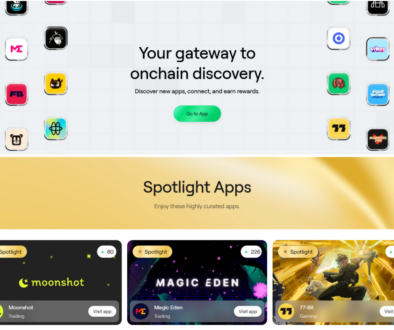Blast: Ethereum’s L2 with Native Yield a New Dawn for NFTs
In the ever-evolving landscape of blockchain and NFTs, a groundbreaking development has emerged that promises to redefine the norms of Ethereum’s Layer 2 (L2) solutions. Enter Blast, an innovative L2 network that stands out as the first of its kind to offer native yield for both ETH and stablecoins directly on the platform. This feature is a game-changer in the realm of digital finance, setting a new standard for the Ethereum ecosystem.
A Leap into the Future with Native Yields
Blast differentiates itself by harnessing the power of ETH staking and Real-World Asset (RWA) protocols to generate yield. This yield, unlike the default 0% interest rate on other L2s, is a robust 4% for ETH and an even more impressive 5% for stablecoins. This mechanism ensures that Blast users automatically receive the benefits of these yields, marking a significant advancement in the way L2 solutions operate.
Introducing Blast: The only Ethereum L2 with native yield for ETH and stablecoins.
We’ve raised $20m from @Paradigm and @StandardCrypto to build the L2 that helps you earn more.
Details on how to get early access at the end of the thread👇 pic.twitter.com/AYYmK8YFx4
— Blast (@Blast_L2) November 20, 2023
Rationale Behind Blast: Bridging the Yield Gap
The inception of Blast is a direct response to a critical observation post-Ethereum merge: the necessity for L2 solutions to integrate native yield for ETH and stablecoins. Traditional L2s lack this feature, creating a gap where users potentially lose out to inflation. Blast, designed from the ground up as an EVM-compatible, optimistic rollup, not only fills this gap but also elevates the baseline yield for both users and developers, without compromising the cryptonative experience.
Innovations Powering Blast
Blast introduces several groundbreaking features that distinguish it from other L2 networks:
- Auto Rebasing: Blast features native rebasing for ETH and its own stablecoin, USDB, ensuring that balances automatically adjust to reflect accrued yield.
- L1 Staking Integration: Thanks to Ethereum’s Shanghai upgrade, Blast can directly transfer L1 staking yields to users, with future plans to diversify beyond initial protocols like Lido.
- T-Bill Yield for Stablecoins: USDB yield is sourced from MakerDAO’s T-Bill protocol, with options for future community-driven protocol selections.
- Gas Revenue Sharing: In a move away from the norm, Blast returns net gas revenue to Dapps, allowing developers to either retain this revenue or subsidize user fees.
Blast and Blur: A Synergistic NFT Ecosystem
The narrative of Blast is intertwined with Blur, an NFT marketplace, through their shared founder, Tieshun Roquerre (aka Pacman). The recent $20 million funding round led by Paradigm, alongside significant contributions from other investors, underscores the ambition behind Blast: to address high transaction costs and introduce innovative trading instruments in the NFT space. This support is further bolstered by an impressive $81 million in assets already deposited on Blast, signifying strong market confidence.
The collaboration between Blast and Blur exemplifies a strategic alliance aimed at enhancing the NFT ecosystem. With plans to deploy L2 apps, including NFT perps on Blast, Blur is set to leverage Blast’s technological advancements to foster a more vibrant and efficient market.
TL;DR
Blast emerges as a pioneering Ethereum L2 network offering native yield for ETH and stablecoins, revolutionizing the digital finance landscape. With features like auto rebasing, L1 staking integration, and gas revenue sharing, Blast sets a new benchmark for L2 solutions. The synergy between Blast and Blur heralds a promising era for the NFT market, underscored by significant funding and market confidence.



